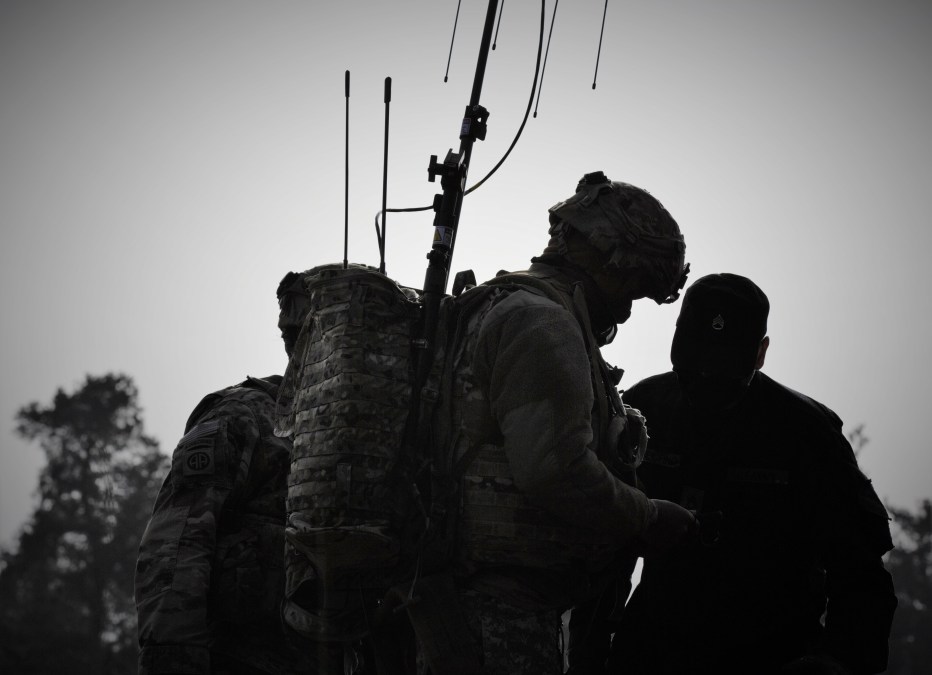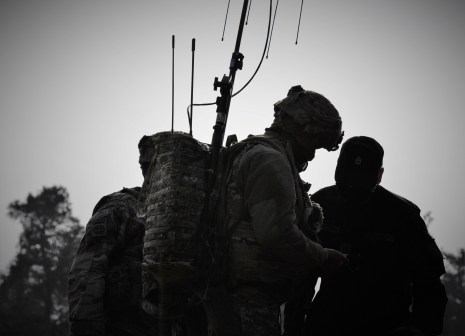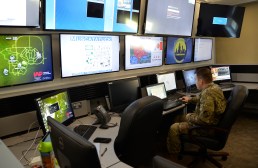Electronic warfare ‘keeps me up at night’: undersecretary of the Army

While not explicitly one of the Army’s key top named priorities, electronic warfare is something that keeps the service’s number two “up at night.”
“It is something that definitely keeps me up at night,” Gabe Camarillo, the undersecretary of the Army told reporters following his participation in an event at the Association of the U.S. Army Wednesday. “I’ve been concerned about the EW and electronic protection capabilities in the Army since I was in [ the office of the Assistant Secretary of the Army for Acquisition, Logistics and Technology] back in the early part of last decade.”
Russian activities in Ukraine over the last several years, to include its current invasion, underscored for the Army the importance of electromagnetic spectrum operations, whether it’s reducing the signature of its command posts to avoid detection, resilient communications from jamming or jamming enemy systems to achieve superiority on the battlefield.
At the end of the Cold War, the Army divested much of its electronic warfare inventory. During counter-insurgency fights of the last 20 years, the Army used blunt jamming tools to thwart improvised explosive devices, which, in turn, inadvertently jammed friendly systems.
“We’ve made the shift since the emphasis on counterterrorism and the [improvised explosive devices], to having fielded EW and electronic protection capabilities that are really more tailored to where the threat is, which is significant against the pacing threat of China and then of course, elsewhere in the globe,” Camarillo said. “There is a need for continued investment, we do have programs in place that are looking at both mounted and dismounted EW capabilities that are progressing very, very well. But I think there continue to be some areas where there are gaps and I think we need to stay ahead of the of the threat curve. That is something that I am very concerned about.”
While the Army is heavily investing in its electronic warfare force, growing it by three-fold, it still has yet to field any offensive program of record jammers.
The first such program – the Terrestrial Layer System-Brigade Combat Team, an integrated signals intelligence, cyber and electronic warfare system on a Stryker – is slated to field to units in fiscal 2022.
The Army is also developing an aerial system called the Multi-Function Electronic Warfare-Air Large, a pod mounted to an MQ-1C Gray Eagle drone. The system is capable of serving as the first brigade-organic airborne electronic attack asset, and providing limited cyberattacks.
In terms of dismounted systems, Army leadership in the past has discussed the continued use of VROD and VMAX, the former surveys the field from an electromagnetic perspective, and the latter provides a limited electronic attack capability. These were quick reaction systems developed to address capability gaps in Europe as opposed to programs of record.
Camarillo cited the Army’s Multi-Domain Task Forces as concrete examples of forces to address the electronic warfare challenge. These units are meant to be in constant contact with adversaries during the so-called competition phase of conflict and exist at higher echelons.
“As an Army, what we have done to help address that is just organizationally by creating the Multi-Domain Task Force’s giving them the responsibility for handling some of that offensive EW and managing some of those electronic protection capabilities as well,” he said. “We continue to, obviously field the MDTFs and I think the capabilities that they employ is something that we need to continue to put emphasis on.”
Camarillo added that Army Futures Command will focus on systems not just fielding today, but down the road, which will include electronic warfare systems for the Multi-Domain Task Forces.




